Are you tired of dealing with the worst insurance companies that seem more interested in denying your claims than providing the coverage you paid for?
Look no further! Today, we’re diving into the realm of insurance and exposing some of the worst offenders in the industry. From refusing payouts to manipulating policies, these companies have earned their reputation as the bottom feeders of insurance.
Get ready to uncover the shady practices of Liberty Mutual, Torchmark, United Health, Farmers Insurance, Wellpoint, Conseco, State Farm, AIG, UNUM, and Allstate Insurance, based on American Association for Justice’s publication and research in 2008.
Let’s shine a light on how they operate and why policyholders are left high and dry when it comes time to make a claim.
Introduction The Ten Worst Insurance Companies
In a groundbreaking effort to unveil the dark underbelly of the insurance industry, researchers at the American Association for Justice (AAJ) embarked on an exhaustive investigation. Their mission? To expose the worst insurances by delving into a multitude of sources.
Thousands of court documents, SEC and FBI records, state insurance department investigations, and complaints were meticulously combed through to uncover the shady practices plaguing consumers. The team left no stone unturned as they scoured news accounts from across the country for further insights.
But it didn’t stop there – former insurance agents and adjusters shed light on their firsthand experiences within these companies. Through testimonies and depositions, a grim picture emerged showcasing how various insurers prioritized profits over policyholders in different sectors such as homeowners, auto, health, life, and disability coverage.
AAJ’s final list includes companies across a range of different insurance fields, including homeowners and auto insurers, health insurers, life insurers, and disability insurers.
One company stood out above all others. Allstate’s concerted efforts to put profits over policyholders has earned its place as the worst insurance company in America. According to CEO Thomas Wilson, Allstate’s mission is clear: “our obligation is to earn a return for our shareholders.” Unfortunately, that dedication to shareholders has come at the expense of policyholders.
The company that publicly touts its “good hands” approach privately instructs agents to employ a “boxing gloves” strategy against its own policyholders. In the words of former Allstate adjuster Jo Ann Katzman, “We were told to lie by our supervisors—it’s tough to look at people and know you’re lying.”
The Insurance Industry’s Wealth
The insurance industry as a whole boasts staggering wealth, with excess cash reserves that may lead to negative performance in the coming years. Despite handling trillions of dollars in premiums and assets exceeding the GDPs of many countries worldwide, some companies within the industry prioritize maximizing profits by minimizing claim payments.
This profit-driven mindset has resulted in numerous cases where legitimate claims are denied or delayed unjustly.
- The insurance industry has so much excess cash it may spark a downturn in the industry. According to analysts at Standards & Poor’s, U.S. insurers are sitting on too much capital, and will likely endure at least three years of negative performance as a result.
- The U.S. insurance industry takes in over $1 trillion in premiums annually. It has $3.8 trillion in assets, more than the GDPs of all but two countries in the world (United States and Japan).
- Over the last 10 years, the property/casualty insurance industry has enjoyed average profits of over $30 billion a year. The life and health side of the insurance industry has averaged another $30 billion.
- The CEOs of the top 10 property/casualty firms earned an average $8.9 million in 2007. The CEOs of the top 10 life and health insurance companies earned even more—an average $9.1 million. And for the entire industry, the median insurance CEO’s cash compensation still leads all industries at $1.6 million per year.
Profits Over Policyholders
Some companies have discovered that they can make more money by simply paying out less. As a senior executive at the National Association of Insurance Commissioners (NAIC), the group representing those who are supposed to oversee the industry, said, “The bottom line is that insurance companies make money when they don’t pay claims.”
Policyholders like Ethel Adams and Debra Potter have experienced firsthand how insurers like Farmers and Unum use tactics such as denial, delay, and defense to avoid fulfilling their obligations. These individuals faced obstacles when trying to claim benefits they rightfully deserved due to insurers disputing the nature of accidents or deeming medical conditions as self-reported without valid grounds.
Companies like Allstate are emblematic of a larger issue within the insurance sector where financial gains take precedence over serving policyholders’ best interests. The prevalence of deny-and-delay strategies across various insurers underscores an alarming trend where profitability reigns supreme above fulfilling commitments made through insurance policies.
The Ten Worst Insurance Companies based on AAJ’s Research
- Allstate
- Unum
- AIG
- State Farm
- Conseco
- WellPoint
- Farmers
- UnitedHealth
- Torchmark
- Liberty Mutual

1. Allstate
CEO: Thomas Wilson (2007 compensation $10.7 million – predecessor Edward Liddy made $18.8 million in compensation and an additional $25.4 million in retirement
benefits)
HQ: Northbrook, IL
Profits: $4.6 billion (2007)
Assets: $156.4 billion
Allstate, known for prioritizing profits over policyholders, has earned a notorious reputation as the worst insurance company in America. The company’s CEO openly states their main goal is to generate returns for shareholders, often at the expense of those holding policies.
Despite its public image, Allstate’s internal strategies prioritize profit margins at the expense of genuine customer care—a concerning trend that places it among the worst insurance companies in America.
Former employees have revealed internal practices that contradict Allstate’s public image, with agents being encouraged to adopt aggressive tactics against policyholders. This approach includes denying valid claims and resorting to deceptive strategies to avoid payouts.
The Pivot Point
In the mid-1990s, consulting giant McKinsey & Co. played a pivotal role in shaping Allstate’s aggressive stance towards policyholders. Tasked with boosting profits, McKinsey recommended a strategy of reducing claim payouts, regardless of validity. This shift marked a deliberate move by Allstate to prioritize financial gains over the well-being of its customers.
The implementation of lowball offers and hardball litigation became standard practice at Allstate. When individuals submitted claims, they often received unreasonably low settlements calculated by secretive software named Colossus. Accepting these undervalued offers could leave policyholders struggling to cover medical expenses and lost wages.
For those unwilling to settle for less than they deserve, Allstate employed an aggressive litigation tactic known as the “three Ds”: deny, delay, and defend. This approach aimed to discourage claimants through prolonged legal battles and resource-intensive processes.
Former employees like Shannon Kmatz shed light on how this strategy made claims arduous and costly for clients—potentially dissuading lawyers from taking on their cases due to the excessive time and effort involved.
One particular PowerPoint slide McKinsey prepared for Allstate featured an alligator and the caption “sit and wait”—emphasizing that delaying claims will increase the likelihood that the claimant gives up. In addition, training manuals instruct adjusters to lowball settlements and delay payments through aggressive litigation tactics.
Multiple States Are Affected
Numerous complaints filed against Allstate highlight a pattern of unfair practices across different states. From overcharging homeowners in Texas to imposing record fines in Maryland, the company’s actions have sparked regulatory scrutiny nationwide.
In Maryland, regulators hit Allstate with the largest fine in state history for making changes to policies and increasing premiums without informing their customers. This led to a hefty $18.6 million payout to affected consumers in Maryland.
Furthermore, recent investigations in Texas uncovered that Allstate had been overcharging homeowners across the state, resulting in an agreement to pay back more than $70 million as restitution. These instances highlight the importance of transparency and fair practices within the insurance industry, emphasizing the need for companies like Allstate to prioritize their policyholders’ interests above all else.
2. Unum
CEO: Thomas Watjen 2007 compensation $7.3 million
HQ: Chattanooga, TN
Profits: $679 million (2007)
Assets: $52.4 billion
UNUM, one of the nation’s leading disability insurers, has long had a reputation for unfairly denying and delaying claims. Unum’s claims-handling abuses have consistently been the subject of regulator and media investigations. There is no better example of Unum’s treatment of policyholders than the case of Debra Potter.
Potter, a financial services worker, developed multiple sclerosis and filed a disability claim with her insurer Unum. Unum denied the claim and told Potter her conditions were “self-reported.” Potter’s physician responded with a series of memos testifying to her problems, saying “there is no basis to support that her complaints are anything other than legitimate.”
Unum continued to deny the claim for three years, even after appeals from Potter’s employer, BB&T, and after the Social Security Administration had concluded she was totally disabled.
Only when Potter hired an attorney did Unum eventually agree to pay the claim. What makes Potter’s case unique is the fact that she had spent years faithfully selling Unum disability policies as part of a financial services package.
“People need safety nets, and that’s what I thought I was selling them,” Potter would later say. “But here I am with all my knowledge of insurance and I couldn’t make it work for me.”40 Unum has a history of denying and delaying claims. In 2003, then CEO Harold Chandler was forced out after much controversy over Unum’s claims-handling policies.
Former employees have gone on record saying Unum ordered them to deny claims in order to meet cost-savings goals. Internal memos would eventually come to light detailing the company’s plan to move from “a claims-payment to a claim-management approach.”
Company executives wrote “[the] return on these claim improvement initiatives is expected to be substantial… [A] 1% decrease in benefit cost…translates into approximately $6 million in annual savings.” Despite the controversy, Chandler left with $17 million in severance and pension benefits. In 2005, Unum agreed to a settlement with insurance commissioners from 48 states over their claims-handling practices. Under the agreement, the company agreed to reopen more than 200,000 cases and pay $15 million.
In California, where nearly one in every four claims for long-term care insurance was denied, the California Department of Insurance launched an investigation into Unum.
The investigation concluded in 2005, and found widespread fraud by the company. According to the report, Unum systematically violated state insurance regulations and fraudulently denied or low-balled claims using phony medical reports, policy misrepresentations, and biased investigations. California Insurance Commissioner John Garamendi described the insurer as an “outlaw company.”
Yet more recent cases show Unum up to their old tricks. In 2007, the company admitted it had only reviewed 10 percent of the cases eligible for reopening under the terms of legal settlements reached three years earlier. In one recent case, the company denied the claim of a 43-year-old man who had to have a quintuple bypass and several stents put in to expand his arteries.
Despite doctors’ orders to stop working, Unum told him he was not disabled and could still work—a decision the U.S. 9th Circuit Court of Appeals would later describe as defying medical science.
Unum, a leading disability insurer, has faced backlash for its unfair denial and delay of claims. One notable case is that of Debra Potter, who developed multiple sclerosis and had her claim rejected by Unum despite medical support. Former employees revealed a culture of denying claims to cut costs.
CEO Harold Chandler left amid scrutiny in 2003 with hefty compensation. The company shifted focus from paying claims to managing them for cost-saving benefits. Unum settled with insurance commissioners over poor practices but continued facing allegations of fraud in California where many long-term care claims were denied unfairly.
Recent cases show the company persisting in denying valid claims, including one shocking instance where a man’s serious heart condition was dismissed as not disabling him according to the court’s assessment.
3. AIG
CEO: Robert Willumstad (former CEO Martin J. Sullivan was fired in June 2008, and is expected to receive as much as $68 million, despite leading AIG to record losses over his three-year tenure—2007 compensation $14.3 million)
HQ: New York, NY
Profits: $6.2 billion (2007)
Assets: $1.06 trillion
The world’s biggest insurer, AIG has a long history of claims-handling abuses for both individuals and business clients. AIG executives have also come under fire for opportunistically seeking price increases during catastrophes.
Now the company has been labeled “the new Enron” because of charges of multi-billion dollar corporate fraud. AIG has long had a reputation for claims-handling abuses.
Part of the reason for that reputation is AIG’s reliance on underwriting results. Nearly every other insurance company relies on the income it makes from investing its policyholders’ premiums.
AIG has always focused on turning a profit on underwriting—in other words, taking in more money in premiums than it pays out in claims. To do that, the company has had to be extremely parsimonious about the claims it pays.
Former AIG claims supervisors have alleged in litigation that the company used all manner of tricks to deny or delay claims, including locking checks in a safe until claimants complained, delaying payment of attorney fees until they were a year old, disposing of important correspondence during routine “pizza parties,” and routinely fighting claimants for years in court over mundane claims.
In 1999, after discovering AIG was losing as much as $210 million on auto-warranty claims, CEO Greenberg installed a new team that began to systematically reject thousands of claims, even when its own claims-handling contractor recommended they be paid. Richard John, Jr., a vice-president at the contractor, would testified that the company used any excuse to deny a claim, including ruling that installing manufacturer-approved tires was a “modification” that invalidated the warranty.
After an AIG-insured Safeway burned down in Richmond, Virginia, the supermarket was confronted with damage claims from nearby residents who had been affected by the fire. AIG denied the claims saying that the damage was caused not by fire but by smoke, which qualified as a form of air pollution and as such was not covered.
In fact, in a series of high profile cases, AIG or its subsidiaries fought claims on tenuous bases, building its reputation as one of the most aggressive claims fighters in the industry.
In 2005, AIG was sanctioned by a federal judge in Indianapolis for attempting to unfairly block discovery in an environmental case. AIG’s lawyers went so far as to give instructions not to answer 539 times during one deposition of an AIG executive.
In January 2008, AIG agreed to pay $12.5 million to several states after state insurance commissioners found that the company had conspired with other insurance brokers to submit fake bids in order to create an illusion of a competitive bidding process in commercial insurance markets. Businesses and local governments ended up paying artificially inflated insurance rates.
Even other insurance companies got the treatment. In 2007, an AIG reinsurance unit was forced by an arbitrator to pay more than $440 million to five insurance companies who alleged the AIG unit tried to rescind their contract when it was time to pay, and then continued to refuse payment even after several courts had ruled against rescission.
AIG, once known as the world’s biggest insurer, has faced scrutiny for its claims-handling practices and alleged corporate fraud. Former CEO Martin J. Sullivan was ousted in 2008 after leading AIG to significant losses despite his hefty compensation. The company’s focus on underwriting results led to a reputation for denying or delaying claims using various tactics, such as withholding checks and disputing valid claims over technicalities like tire specifications.
In high-profile cases, AIG refused legitimate claims by categorizing damages as smoke-related rather than fire-related incidents to avoid payouts. Additionally, AIG faced legal repercussions for attempting bid-rigging schemes that led to inflated insurance rates for businesses and local governments. The company’s aggressive stance on claim denials extended even to other insurers, resulting in costly legal battles and arbitration settlements.
4. State Farm
CEO: Edward B. Rust Jr. 2007 compensation $11.7 million
HQ: Bloomington, IL
Profits: $5.5 billion (2007)
Assets: $181.4 billion
As the biggest property casualty insurance company in America, State Farm has become notorious for its deny and delay tactics. In many cases, the company has gone to extreme lengths to avoid paying claims, including forging signatures on earthquake waivers after the deadly Northridge earthquake, and altering engineering reports regarding damage after Hurricane Katrina. Hurricane Katrina showed State Farm at its worst.
One of the deadliest natural disasters in U.S. history, Hurricane Katrina made landfall on August 29, 2005, near Buras, Louisiana. The storm killed nearly 1,600 people and caused $135 billion in damages. One of the legacies of the storm was the widespread dissatisfaction with the response of State Farm and other insurance companies. State Farm would later claim it had settled 99 percent of its cases, but regulators criticized the company for using misleading statistics.
The company claimed that any house that had what they considered water damage did not constitute a claim in the first place.In fact, the Louisiana Department of Insurance reported that it was contacted by 9,000 consumers seeking help resolving disputes with their insurance companies.
State Farm denied the claims of the Nguyen family of Mississippi, who lost their home in Hurricane Katrina. State Farm’s own engineers concluded that the damage was caused by wind and even cited eyewitnesses who saw another house picked up by the wind and thrown into the Nguyens’ home. State Farm, however, hired another engineering firm to come to a different conclusion and then denied the claim, saying the damage was caused by flooding.
State Farm also denied the claims of Dean Barras in Louisiana. Barras’s home was exposed to the elements for two weeks, but State Farm’s response was “the chimney was not built properly.”
Bob Kochran, CEO of an engineering firm assessing Katrina damage for State Farm, said that he was asked to alter reports with which the company did not agree. In order to keep the State Farm contract, Kochran agreed to tell his engineers to “re-evaluate each of our assignments.”
One of the engineers, Randy Down, responded in an email, “I have a serious concern about the ethics of this whole matter. I really question the ethics of someone who wants to fire us simply because our conclusions don’t match theirs.” State Farm’s attempt to unduly influence the engineers was exposed during litigation in Jackson, Mississippi.
One such angry policyholder was United States Senator Trent Lott. Lott, who had long counted on insurance companies for support, became an industry critic after his beachfront house was destroyed by Hurricane Katrina and his subsequent claim was denied by State Farm. Lott eventually settled with State Farm, but went on to sponsor legislation requiring insurers to provide “plain English” summaries of what their policies did and did not cover.
Hurricane Katrina had highlighted insurance company use of such things as anti-concurrent clauses, which led policyholders into believing they were covered from the risks of hurricanes, when in fact subsequent flooding might wipe out any chance of a claim being paid. “They don’t want you to know what you really have covered,” said Lott.
State Farm, led by CEO Edward B. Rust Jr., holds the title of the biggest property casualty insurance company in America. However, its tactics have garnered notoriety for their deny and delay strategies when it comes to paying claims. In the aftermath of Hurricane Katrina, State Farm faced scrutiny for its response to policyholders affected by the disaster.
The company’s handling of claims from families like the Nguyens in Mississippi and Dean Barras in Louisiana raised ethical concerns as engineering reports were allegedly altered to suit State Farm’s narrative. Even United States Senator Trent Lott found himself embroiled in a battle with State Farm after his claim was denied following Hurricane Katrina.
The legacy left by State Farm post-Hurricane Katrina revealed a pattern where policyholders felt misled about their coverage amid devastating natural disasters. The lack of transparency and questionable practices highlighted a need for clearer communication between insurers and insured individuals during times of crisis.
Despite settling some claims after public outcry, State Farm’s reputation took a hit due to its contentious approach towards processing claims post-natural disasters like Hurricane Katrina. The incidents underscored the importance of accountability and fair treatment for policyholders facing catastrophic events beyond their control.
5. Conseco
CEO: C. James Prieur 2007 compensation $2.6 million
HQ: Indianapolis, IN
Profits: $179.9 million (2007)
Assets: $33.5 billion
Conseco sells long-term care policies, typically to the elderly. Unfortunately, Conseco uses the deteriorating health of its policyholders to its advantage because the company knows if it waits long enough to pay out claims, its customers will die. Conseco’s customers are some of the most vulnerable members of the population. The company sells long-term care policies, typically to the elderly, as insurance that the policyholder will be taken care of at the end of his or her life.
Unfortunately, Conseco uses the imminent deaths of its policyholders to its advantage by delaying or denying valid claims of those who can no longer care or advocate for themselves.
Mary Beth Senkewicz, a former senior executive at the National Association of Insurance Commissioners (NAIC), summed up the tactics of the long-term care insurance industry quite succinctly: “The bottom line is that insurance companies make money when they don’t pay claims…They’ll do anything to avoid paying, because if they wait long enough, they know the policyholders will die.”
Long-term care insurance policies are usually purchased by senior citizens as assurance that they will be able to afford to live in an assisted living center or nursing home when they are no longer capable of living on their own. Conseco and its subsidiaries, Bankers Life and Casualty and Penn Treaty American, sell such policies.
However, many policyholders have not been satisfied with the way their claims have been handled. Conseco, Bankers, and Penn Life have had numerous complaints filed with state regulators over long-term care insurance, particularly in regard to claims handling, price increases, and advertising methods.
Despite all their efforts to retain money by refusing to pay valid claims, Conseco has fallen on hard times financially. Throughout the 1990s, Conseco and its affiliates aggressively undercut their competitors and expanded their market share in the long-term care insurance market.
Around the time company founder Stephen Hilbert left in 2000, the market tightened and executives realized they had been underestimating how long policyholders would live once they entered nursing homes. In 2002, the company fell $6.5 billion in debt and was forced into Chapter 11 bankruptcy.
Conseco sued Hilbert for more than $250 million over company-backed loans and debt. In 2004, a court ordered Hilbert to return $62.7 million plus interest to Conseco and allowed the company to foreclose upon his 25,000 square-foot mansion in Indiana.
Hilbert and Conseco agreed to a confidential settlement in 2007 that allowed the former CEO to keep his house.
Two other Conseco executives faced civil and criminal charges for their roles in an accounting fraud scheme that overstated the company’s earnings by hundreds of millions of dollars. Former CFO Rollins S. Dick and former chief accounting officer James S. Adams admitted to filing misleading financial statements with regulators between March 1999 and April 2000. In 2006, an Indiana court ordered that Dick and Adams be prohibited from serving as a director or officer of a public company for five years and ordered them to pay civil penalties of $110,000 and $90,000, respectively.
Former employees of Conseco and its subsidiaries have spoken out about the company’s claims-handling practices. Former Bankers Life agent Betty Hobel said Conseco 12 5. C
Conseco, a company known for selling long-term care policies to the elderly, has been criticized for using the deteriorating health of its policyholders to its advantage. By delaying or denying valid claims, Conseco exploits the vulnerability of its customers who rely on these policies for end-of-life care.
Despite complaints filed with state regulators regarding claims handling and pricing practices, Conseco has faced financial struggles over the years. The company’s aggressive tactics in undercutting competitors led to significant debt and eventually forced it into Chapter 11 bankruptcy in 2002. Former executives also faced legal repercussions for their involvement in an accounting fraud scheme that inflated earnings by hundreds of millions of dollars.
Ex-employees have shed light on Conseco’s questionable claims-handling practices, showcasing a pattern of prioritizing profits over fulfilling obligations to policyholders.
6. WellPoint
WellPoint has a long history of putting its bottom line ahead of the welfare of its policyholders and their health care providers. Investigations have shown that Wellpoint routinely cancels the policies of pregnant women and chronically ill patients. Indianapolis-based Anthem and Thousand Oaks, and California-based WellPoint completed a $20.8 billion merger in late 2004, creating the nation’s largest health insurer, covering approximately 28 million people.
The deal was widely criticized by consumers, doctors, pension managers, and state regulators, who feared the merger would create a monopoly that would both raise premiums and reduce payment on claims, in part to cover the cost of the massive severance packages offered to executives who brokered the deal. California’s State Treasurer Philip Angelides and Insurance Commissioner John Garamendi, as well as officials at the California Public Employees’ Retirement System, or CalPERS, criticized the deal for providing excessive compensation to executives. The terms of the merger included a payout of over $250 million to nearly a dozen executives at the company. Leonard Schaffer, WellPoint’s Chairman and CEO at the time, received the largest windfall of all: nearly $82 million in severance, an executive pension, and stock options.
California is making an aggressive effort to force WellPoint to stop engaging in practices it believes are illegal. In March 2007, the state’s Department of Managed Health Care fined Blue Cross of California and its parent company, WellPoint, $1 million after an investigation revealed that the insurer routinely canceled individual health policies of pregnant women and chronically ill patients.
The practice, known as rescission, is illegal in California. In order to drop individual policies, which are usually purchased by consumers who cannot receive health insurance through their employers, the insurer must show that the policyholder lied about their medical history or preexisting conditions on the application. As part of the state’s investigation, regulators randomly selected 90 cases where the insurer had dropped the policyholder. In every single one investigators found the insurer had violated state law.
During the investigation, California regulators uncovered more than 1,200 violations of the law by the company in regard to unfair rescission and claims processing practices. In December 2007, Insurance Commissioner Steve Poizner announced his office was imposing a $12.6 million fine against Blue Shield, saying the company had “committed serious violations that completely undermine the public trust in our healthcare delivery system.”
Among these violations were improper rescissions, failure to pay claims on a timely basis, failure to provide required information when denying a claim, failure to pay interest on claims where required, and mishandling of member appeals.
Despite a series of fines and reprimands from the state, Anthem did not change its claims-handling practices. The continuation of rescission practices forced Los Angeles City Attorney Rocky Delgadillo to sue Anthem Blue Cross of California in April 2008, for fraud, violation of state and federal insurance regulations, and violation of truth-in-advertising laws. Anthem’s practice of canceling policies of sick patients prompted Delgadillo to claim that “[t]he company has engaged in an egregious 14 6. WellPoint scheme to not only delay or deny the payment of thousands of legitimate medical claims but also to jeopardize the health of more than 6,000 customers by retroactively canceling their health insurance when they needed it most.”
He also alleged that “more than 500,000 consumers have been tricked into purchasing largely illusory healthcare coverage based upon the company’s false promise.”
The city is seeking civil penalties of between $2,500 and $5,000 for each violation, which could add up to over $1 billion. Other states have taken action against WellPoint and its subsidiaries over their claims-processing practices. In January 2008, Nevada Insurance Commissioner Alice A. Molasky-Arman announced a $1 million settlement with Anthem Blue Cross and Blue Shield over systematic overcharging of policyholders.
Similarly, Colorado’s Insurance Commissioner, Marcy Morrison, secured a $5.7 million refund for consumers of Anthem Blue Cross Blue Shield health insurance policies.
In Kentucky, the Office of Insurance ordered Anthem Health Plans of Kentucky to refund $23.7 million to 81,000 seniors and disabled people over inaccurate Medicare claims payments.
Physicians have their own set of grievances against the insurance behemoth. WellPoint was one of several health insurers sued by 800,000 doctors who claimed they were routinely denied full payment for care they provided to policyholders. In two lawsuits, the physicians argued that insurance companies manipulated computer programs to systematically underpay physicians for the treatments they provided.
Physicians in California have encountered a new reason to be outraged by WellPoint. Blue Cross California has recently sent letters to physicians instructing them to inform the company of any pre-existing conditions they come across when evaluating patients. The letter demanded that “[a]ny condition not listed on the application that is discovered to be pre-existing should be reported to Blue Cross immediately.”
The California Medical Association promptly forwarded the letter to state regulators complaining that the insurance company is “asking doctors to violate the sacred trust of patients to rat them out for medical information that patients would expect their doctors to handle with the utmost secrecy and confidentiality.”
WellPoint, through its subsidiaries Anthem and Blue Cross, has faced intense scrutiny for its practices that prioritize profits over the well-being of policyholders. The $20.8 billion merger with Thousand Oaks-based WellPoint raised concerns about potential monopolistic impacts on healthcare services and executive compensation excesses.
The company’s illegal rescission practices, where policies of pregnant women and chronically ill patients were routinely canceled under false pretenses, led to hefty fines from California regulators. Investigations uncovered numerous violations related to unfair claims processing, prompting substantial penalties against the insurer.
Physicians have also criticized WellPoint for routinely denying full payment for medical treatments provided to policyholders. Allegations surfaced that computer programs were manipulated to underpay doctors systematically. In a controversial move, Blue Cross California even instructed physicians to report any undisclosed pre-existing conditions they discovered during patient evaluations.
State insurance commissioners in Nevada and Colorado secured settlements over systematic overcharging of policyholders by Anthem Blue Cross entities. Kentucky ordered refunds due to inaccurate Medicare claims payments affecting seniors and disabled individuals.
WellPoint’s questionable business tactics have not only jeopardized the health of thousands but also undermined trust in the healthcare delivery system by engaging in unethical practices aimed at maximizing profits rather than prioritizing patient care.

7. Farmers Group
CEO: Paul N. Hopkins (Farmers Group Inc. US subsidiary of Zurich Financial Services. Zurich CEO James J. Schiro 2007 compensation $10.3 million)
HQ: Los Angeles, CA
Profits: Zurich Financial—$5.6 billion (2007)
Assets: $387.7 billion
Swiss-owned Farmers Insurance Group consistently ranks at or near the bottom of homeowner satisfaction surveys. Given its tactics towards its policyholders, that comes as no surprise. The company even created an incentive program that offered pizza parties to adjusters who met low payment goals.
Farmers Insurance Group consistently ranks among the worst insurance companies for customers of homeowners or auto insurance in satisfaction surveys from the likes of JD Powers and Consumer Reports.
Nor is it just individuals who get the short end of the stick. U.S. businesses were victimized by Farmers’ parent company, Swiss giant Zurich Financial Services, which in the last few years has paid out nearly half a billion dollars to settle bid-rigging and price-fixing cases.
According to regulators, “businesses shopping for commercial insurance were deceived into believing they were getting the best deals available. The whole anti-competitive scheme was an intentional smoke screen by several insurance players to artificially inflate premiums and pay improper commissions to those who brokered the deal.”
No case is as illustrative of the Farmers attitude than that of Ethel Adams. The 60-year-old Washington State woman was involved in a multi-vehicle accident that put her in a coma for nine days, left her with devastating injuries, and eventually confined her to a wheelchair. Incredibly, Farmers denied her claim, reasoning that the driver at fault had acted in a moment of intentional road rage, and thus the crash was not an accident.
The company’s denial caused an outcry, and Farmers Los Angeles headquarters was flooded with calls and emails from angry policyholders threatening to boycott the company. Farmers only caved when the Washington State Insurance Commissioner threatened the company with legal action.
Adams’ case is symptomatic of Farmers’ attitude towards its policyholders. Internal company documents and testimony from former employees reveal a company that systematically places profits over policyholders. An example is Farmers’ employee incentive program, “Quest for Gold.”
The program offers token incentives, including $25 gift certificates and pizza parties, to adjusters who meet goals, such as low payments and the rates at which they are able to dissuade claimants from retaining an attorney.
Employees’ performance reviews and pay raises are also determined by their ability to meet claim payment goals.
Internal emails show one particular claims manager encouraging representatives to intentionally underpay valid claims, saying, “[as] you know, we have been creeping up in settlements… Our [claims representatives] must resist the temptation of paying more just to move this type file. Teach them to say, ‘Sorry, no more,’ with a toothy grin and mean it.”
The same email also indicated that claims representatives were financially rewarded for such behavior. The manager singled out an employee who consistently low-balled claims, saying, “[i]f he keeps this up during 2002, we will pay him accordingly.”
Such strategies have attracted the attention of state insurance industry regulators. In North Dakota, Farmers has been fined for “unfair practice in the business of insurance… and an unfair claim settlement practice.”
Swiss-owned Farmers Insurance Group has consistently ranked poorly in homeowner satisfaction surveys, showcasing its questionable tactics towards policyholders. The company’s incentive program offering pizza parties to adjusters who meet low payment goals reflects a profit-driven approach over customer care.
One striking case is that of Ethel Adams, where Farmers denied her claim after a severe accident, causing public outcry and threats of boycotts. Internal documents reveal a culture that prioritizes profits, with management encouraging underpayment of valid claims.
Regulators have fined Farmers for unfair practices and improper claims settlement approaches, shedding light on the company’s controversial methods in handling insurance policies.
8. United Health
UnitedHealth is plagued by accusations that its greed has endangered patients. Physicians report that reimbursement rates are so low and delayed by the company that patient health is compromised.
Money that should have been spent on medical treatment for policyholders has instead gone to the company’s former CEO, who faced criminal and civil charges for backdating stock options.
UnitedHealth has also used its association with AARP to jack up premiums on products aimed at seniors, even though they are no better than their cheaper counterparts. William McGuire orchestrated UnitedHealth Group’s rapid growth to become the largest health insurance company by premiums written in America.
Along the way, he ensured that he would be well compensated for his efforts. When McGuire became CEO in 1990, he immediately began to streamline the company by cutting back on coverage for treatment he deemed unnecessary and by bargaining with doctors to reduce payments. UnitedHealth also became dominant in the burgeoning HMO market by investing in information technology and acquiring smaller companies.
The company’s success under his leadership made it easy for McGuire to convince the board of directors to reward him for his performance. McGuire was allowed to choose when his stock options would be awarded, essentially allowing him to backdate his options to make it appear they were issued on days when stock prices were at their lowest.
The Wall Street Journal conducted an analysis of McGuire’s stock option grants between 1994 and 2002 and concluded that the probability the options were randomly awarded on dates when stock prices were at their lowest would be about 1 in 200 million.
An internal memo made public during litigation confirmed that on at least one occasion options were granted “with an advantageous price.”
By backdating his options, McGuire was able amass $1.6 billion in options as UnitedHealth’s stock price rose from 30 cents per share in 1990 to $62.14 in December 2005.
Given the incredible performance of the stock, the board saw no reason to restrain McGuire. Shareholders and the SEC did not share the board’s view of McGuire’s worth. The SEC opened an investigation into UnitedHealth’s options granting process, which ultimately led to McGuire’s ouster as CEO in 2006. Additionally, McGuire agreed to give back $620 million in stock gains and retirement compensation in order to settle federal and shareholder claims.
The settlement left McGuire with just $800 million in options and $530 million in compensation. During his tenure as CEO, McGuire was meticulous about expanding the company’s reach. One very profitable move was the decision to partner with AARP to sell insurance products.
UnitedHealth Group understood the value of AARP’s image as a trusted advocate for senior citizens’ rights when it partnered with the non-profit organization in 1998 to market its insurance products. That year, the insurer won a 10-year contract to brand its supplemental Medicare insurance policies with the AARP name.
The deal was lucrative for both sides. UnitedHealth received $4.5 billion in premiums from AARP-branded products in 2004, while the seniors’ organization pulled in $197 million in royalties and $23 million in investment income that same year.
UnitedHealth has faced allegations of greed that put patient health at risk. Physicians have raised concerns about low reimbursement rates and delayed payments by the company, impacting medical treatment for policyholders. Former CEO William McGuire’s involvement in backdating stock options led to criminal and civil charges, diverting funds from patient care. McGuire spearheaded UnitedHealth’s growth, focusing on streamlining operations and expanding into the HMO market through strategic acquisitions.
Under McGuire’s leadership, he received substantial compensation through backdated stock options, leading to his eventual ouster due to SEC investigations. The partnership with AARP further fueled UnitedHealth’s success, leveraging the non-profit organization’s reputation for senior advocacy to market insurance products successfully.
Despite these achievements, UnitedHealth’s practices have come under scrutiny for prioritizing profits over patient well-being and engaging in controversial business tactics that have sparked legal challenges and regulatory actions.
9. Torchmark
CEO: Mark S. McAndrew 2007 compensation $4.7 million
HQ: McKinney, Texas
Profits: $527.5 million (2007)
Assets: $15.2 billion
Founded, by its own admission, as little more than a scam, Torchmark has preyed upon low-income Southerners for over 100 years. Torchmark is the holding company for a variety of subsidiaries offering low cost burial insurance, cancer insurance, life insurance, and similar policies. The company has come under fire for a variety of transgressions, including charging minority policyholders more than whites.
According to its former CEO, Torchmark’s very origins are as a scam. Founded in 1900, the group’s purpose was to funnel money to its founders, according to former CEO Frank Samford. Then known as the Heralds of Liberty, it initially registered itself as a fraternal organization to circumvent Alabama’s insurance laws.
It was reorganized as a stock company in 1929 and absorbed several other insurance companies over the course of the century before adopting the name Torchmark for the holding company in 1982.
Since then, Torchmark and its various subsidiaries have preyed upon low-income Americans all over the South. The various schemes and tactics it has engaged in, including race-based underwriting, refusing insurance to non-English speakers, and deliberate overcharging of premiums, have prompted frequent lawsuits from regulators and policyholders alike. Now Torchmark plans to expand into more states.
In the 1990s, Torchmark subsidiary Liberty National Insurance was forced to pay several millions of dollars in litigation alleging fraud in selling cancer insurance policies. The company had marketed the policies in the 1980s promising lifetime benefits, yet changed the policies without telling their customers.
Torchmark subsidiaries Globe Life and Accident Insurance and United American Insurance also came under fire for their marketing of individual health insurance policies. Some of the tactics that were highlighted included selling replacement policies that did not actually replace all of a person’s coverage. Company agents would convince policyholders that their current coverage would be discontinued at age 65, even when it was guaranteed for life, and then would offer new policies that were not worth as much.
Another tactic involved offering “lowcost” policies at rates that quickly shot up. In one such case in 1989, a Greenville, Mississippi, man bought a policy with an $86 a month “teaser rate.” Torchmark did not disclose that the rate would immediately go up. Within two years, the rate had more than doubled.
For years Torchmark and its affiliates have been involved in litigation concerning race-based pricing, particularly over “burial policies.” In the mid-1980s, half of all Alabamans who died had a burial policy from Torchmark. These burial policies were sold at a higher price to black policyholders. In 2000, a Florida court ordered the company to stop collecting premiums on the old burial policies because black policyholders had been charged more than white policyholders. Alabama regulators followed with an investigation.
In 2006, Torchmark subsidiary Liberty National Life Insurance paid $6 million to resolve a 2,000 member class action lawsuit. According to the allegations, Liberty National agents would market these policies with premiums of less than $1 to attract low-income policyholders. However, black policyholders ended up paying 36 percent more than white policyholders.
Torchmark In 2003, Torchmark affiliate United American Insurance settled charges that it had defrauded senior citizens in the sale of Medicare policies. A two-year investigation in Minnesota concluded the company had misled hundreds of people into purchasing supplemental Medicare insurance policies.
According to the report, United American aggressively pressured hundreds of seniors into buying insurance that was more expensive and less comprehensive than the insurance they already had, which was a violation of state law. Internal documents showed that company agents were encouraged to act as if they were representing federal agencies or senior service centers.
United American used a subsidiary, Consumer Support Services, which sent mass mailings to elderly citizens signed from the “Medicare Supplement Division.” Agents would then set up meetings to offer information packets, which in reality were home-sales opportunities. The fraud was reported by United American’s own employees.
The company also deliberately delayed premium refunds and lied to authorities about its reserves. The Minnesota Commerce Department Commissioner said of the case, “This is not a case of rogue agents. These are not technical violations. This is irresponsible corporate culture at work.”
A subsequent report from the state Office of the Legislative Auditor criticized the settlement because it had allowed United American several improper concessions. Among these were a confidentiality provision that kept the deal secret, an agreement not to report the company to the National Association of Insurance Commissioners (NAIC), and an agreement to characterize the company’s payment as a “fee reimbursement,” not a penalty or fine.
It was at least the third time United American had been found to have broken Minnesota insurance laws. At the time, ten states had issued at least 26 enforcement actions against the company.
Even Torchmark’s own employees are not immune from the company’s desire to put profits over people. In 1998, Liberty National incurred a multimillion dollar verdict for age discrimination claims put forward by its employees. Evidence presented at the trial highlighted one particularly aggressive manager, Andy King.
Ironically, in 2006, Torchmark CEO Mark McAndrew brought in Andy King to shake up Liberty National’s employees. Newly installed as President and Chief Marketing Officer of Liberty National, King would oversee what McAndrew described as a move from “socialistic” compensation to a “capitalistic” approach.
McAndrew went on, “There is no doubt moving Andy out there we will see an improvement in the recruiting and new agent hiring. As far as these people that are at extremely low production level, this has been a long term problem. It is something that has gone on for years, so it’s not anything new. Some of those are veteran agents. Most of those would be more veteran agents. It has been accepted for a number of years, and it is something we’re changing.
So it’s really not a new problem.” Torchmark got a taste of its own medicine in 2003 when Waddell and Reed, a unit that Torchmark itself had spun off in 1998, conspired to switch policyholders from United Investors Life, another Torchmark subsidiary, to rival Nationwide.
When United Investors sued, Waddell and Reed filed a civil racketeering claim against Torchmark accusing its former parent of scheming to continue its hold over Waddell after it was spun off. Torchmark eventually prevailed.
Torchmark, under the leadership of CEO Mark S. McAndrew, has a long history of controversy and unethical practices. The company, founded with questionable intentions as admitted by its former CEO Frank Samford, has been accused of preying on low-income individuals in the South for over a century. Torchmark’s subsidiaries offer various insurance policies but have faced criticism for charging minority policyholders more than their white counterparts.
One notable case involved subsidiary Liberty National Insurance being embroiled in litigation over alleged fraud in selling cancer insurance policies. The company marketed lifetime benefits but changed policies without informing customers. Torchmark’s tactics also extended to race-based pricing and misleading marketing strategies that led to lawsuits from regulators and policyholders.
In another instance, United American Insurance settled charges of defrauding senior citizens in the sale of Medicare policies after an investigation revealed deceptive practices such as pressuring seniors into purchasing expensive and inadequate insurance plans.
Despite internal issues like age discrimination claims within Liberty National, Torchmark faced further legal battles when Waddell and Reed conspired against it post-spinoff. This incident highlighted ongoing conflicts within the company even amongst its affiliates’ actions towards each other.
10. Liberty Mutual
CEO: Edmund F. (Ted) Kelly 2005 compensation $27 million
HQ: Boston, MA
Profits: $1.5 billion (2007)
Assets: $94.7 billion
Like Allstate and State Farm, Liberty Mutual hired consulting giant McKinsey & Co. and adopted deny, delay, and defend tactics. The company has also gone one further than simple claims-handling abuses by indulging in what regulators allege is systematic bid-rigging.
Like Allstate and State Farm before it, Liberty Mutual hired consulting giant McKinsey & Co. to boost its bottom line. The McKinsey strategy relies on lowering the amounts paid in claims, no matter whether the claims were valid or not.
By all accounts, Liberty Mutual has not become as notorious as its rivals for the deny, delay, and defend tactics that McKinsey encouraged. However, that has not stopped the company from leading the way in complaint rankings and stories of short-changed victims.
In fact, Liberty Mutual is facing a glut of litigation from its own vendors who say the company’s cost-cutting has resulted in poor claims processing and a spike in lawsuits.
Like several other big property casualty insurers, Liberty Mutual has also begun abandoning policyholders across the country. The company has pulled out of many states—not only hurricane susceptible states such as Florida and Louisiana, but also northern states such as Connecticut, Rhode Island, Maryland, Massachusetts, and much of New York.
A 2007 New York Times article highlighted Liberty Mutual policyholders James and Ann Gray of Long Island. The Grays were “nonrenewed” by Liberty Mutual despite the fact that they lived 12 miles from the coast and had “been touched by rampaging waters only once, when the upstairs bathroom overflowed.” In fact, Liberty Mutual and its big name competitors have left more than 3 million homeowners stranded over the last few years.
New York regulators chastised Liberty Mutual for tying nonrenewals to whether a policyholder had an auto policy or other coverage, against state law.
Liberty Mutual has also gone where even its big property-casualty rivals Allstate and State Farm have feared to tread by trying its hand at massive corporate fraud. While the likes of AIG, Zurich, and ACE settled charges that they colluded with broker Marsh & McLennan in a huge bid-rigging fraud, Liberty Mutual remains the only insurance company that refuses to concede guilt.
The fraud centered around fake bids that companies submitted to Marsh in order to garner artificially inflated rates. Liberty Mutual claims its business practices were lawful and that regulators’ settlement demands are “excessive.”In the cutthroat world of insurance companies, Liberty Mutual has not escaped scrutiny.
Like its counterparts Allstate and State Farm, Liberty Mutual engaged McKinsey & Co.’s services to maximize profits through deny, delay, and defend tactics. Allegations of systematic bid-rigging have further tarnished its reputation.
Despite not reaching the same infamy as other industry giants for their claims-handling practices, Liberty Mutual faces a barrage of complaints and lawsuits from vendors dissatisfied with cost-cutting measures impacting claims processing quality.
Moreover, by abandoning policyholders across various states and facing accusations of corporate fraud related to bid manipulation schemes – where competitors admitted guilt but Liberty Mutual stood defiant – the company finds itself entangled in controversies that raise serious ethical concerns.
With more than 3 million homeowners left in limbo due to nonrenewals and questionable practices highlighted by New York regulators regarding auto policies ties during nonrenewals, Liberty Mutual’s actions continue to spark outrage among consumers and regulators alike.
As the spotlight shines on these egregious behaviors within the insurance industry, it becomes increasingly apparent that profitability should never take precedence over fair treatment of policyholders. The need for transparency, accountability, and ethical business practices must be upheld to protect consumers’ rights in an industry meant to provide security and peace of mind.





























